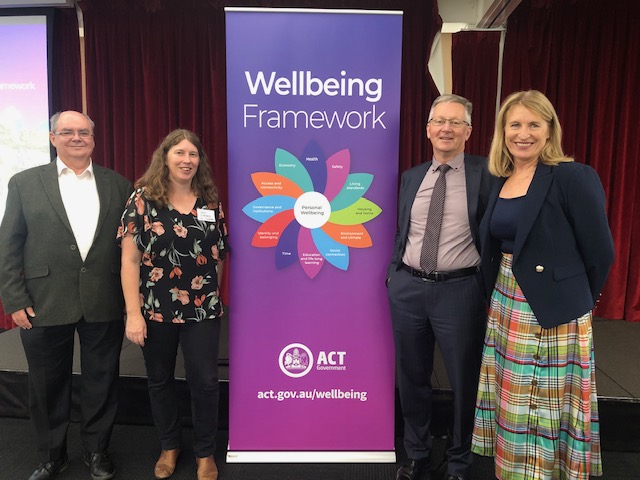Suzanne Lazaroo
17 March 2020: A meaningful framework to shape better lives for all – that’s the ultimate hope for the ACT government’s Wellbeing Indicators initiative, launched on 12 March.
The framework was developed by the Government in consultation with Canberrans, community and industry organisations, as well as experts from the University of Canberra, the Australian National University, Deakin University and Murdoch University.
The 12-domain Wellbeing Framework is meant to feed into policy and budget planning processes from 2021–2022. Each domain is an area important to the life of a Canberran; there are also indicators for each domain, which help to track progress.
Incorporating a strong, nine-month community consultative process, the framework includes ratings of Canberrans across various dimensions including environment, health, housing, economy, identity and social connection. It measures what’s really important to people living in Canberra, drawing on feedback from over 3,000 locals.
The University’s Associate Professor Jacki Schirmer from the Health Research Institute (HRI) and Centre for Applied Water Science (CAWS) and Professor Robert Tanton from the Institute for Governance & Policy Analysis are two of the researchers who worked in consultation with the ACT government.

Associate Professor Schirmer said the consultative activity was valuable not just in data-gathering, but in ensuring the voices of people from all walks of life were heard in the decision-making process.
“It’s very important that any wellbeing framework is designed based on what is important to all members of the community, and especially the most vulnerable,” said Associate Professor Schirmer.
Associate Professor Schirmer said that she was pleased to see an explicit focus on particular potentially vulnerable groups in the framework.
“If not done carefully, wellbeing indicators can lead to the reinforcement of privilege, if you just get a select few voices,” she said.
“But in this case, the focus on the marginalised lessens that risk, and increases the likelihood that measurement of these indicators will be able to guide decisions about how to direct funding to support those who are more vulnerable.”
Associate Professor Schirmer says that she is also pleased the framework includes both subjective indicators that measure people’s lived experiences – such as rating the quality of services available to them in the ACT – as well as objective indicators such as the number of services or how many people access them.
Having both indicator types creates a more community-centred picture in which the views of residents are central to assessing their quality of life.
While looking at other similar frameworks in place globally, such as New Zealand’s Living Standards Framework, there are some aspects specific to the ACT framework.
“The ACT Government has included ‘nature connection’ as an indicator, as well as resilience to climate change, recognising the importanceof these things to Canberra’s identity as the bush capital, and to the wellbeing of all Canberrans into the future,” said Associate Professor Schirmer.
This is in addition to more common measures of wellbeing such as living standards, health, income and social connection.
As ACT Chief Minister Andrew Barr told The Canberra Times (Wellbeing measures will guide ACT government: Barr, 12 March 2020), “More and more, governments around the world are recognising that economic growth alone does not account for a community's success or progress over time.”
"To gain a real sense of our wellbeing, we must broaden our gaze to look at the range of factors that contribute to quality of life, how they can be sustained and improved over time for future generations, and ensure that all in the community are feeling the benefits of improved wellbeing."
Mr Barr said that a "dashboard" of wellbeing measures would be released later in the year and updated every two years.


